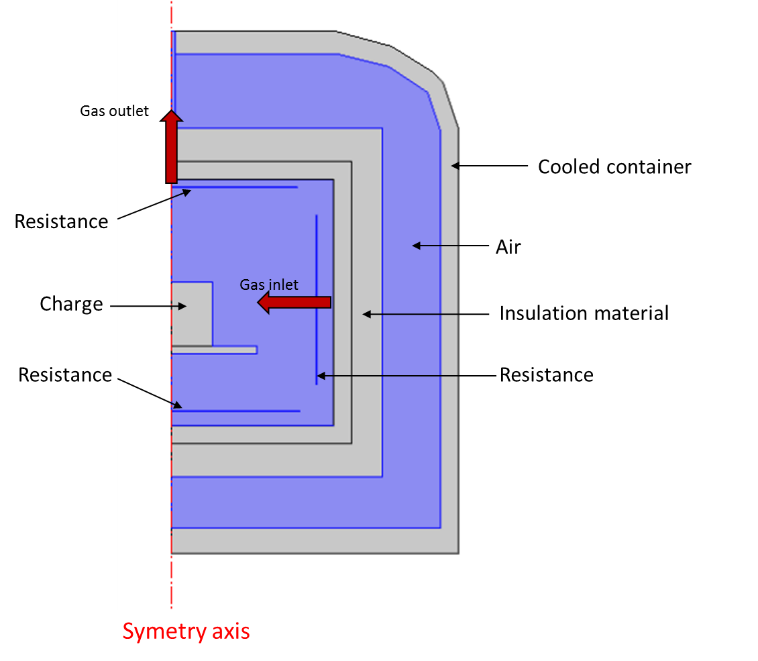Keywords
Four statique, four résistif, chauffage, transfert thermique, convection forcée, convection naturelle, rayonnement.
Context / Goal
Many materials elaboration processes involve some specific thermal treatments. These can be required for the synthesis of the material (powder sintering for example) or can be employed to give to the material some specific properties, often mechanical (annealing of metal and alloys).
A very common furnace in the industry is the resistive furnace, involving a simple architecture, in which resistances are heated up due to electric current flow (Joule effect). Though this is an old and well-tested technology, a furnace may be adapted to the thermal process and to the charge to be treated. For example, the position of the resistances can be optimized in order to reduce the electric consumption of the system for the same working temperature, or define the best gas flow configuration, for processes requiring treatment under inert atmosphere. For this purpose, the use of numerical modeling can be useful.
In this example, the thermal simulation of a resistive furnace used for the annealing of alloys. The furnace enclosure (see sketch) is submitted to a neutral gas flux and heated up by 3 outlying resistances. The goal of the model is to predict the evolution of the temperature at different locations of the enclosure, during a specific thermal cycling subjected to the charge.
SIMTEC's Achievements / Results
An aerothermal model has been implemented in Comsol Multiphysics, with the following characteristics:
-
2D axisymetry description: the model is developed in 2D for a half-section of the furnace. The corresponding 3D data are obtained with a circular extrusion along the revolution axis of the furnace.
-
Convection model: the forced convection of the gas in the furnace enclosure is described under laminar flow (Navier-Stokes equation for compressible fluid). The gas properties (pressure, density, conductivity…) vary with temperature, which is solved for with the thermal model. The flow rate at the inlet is based on experimental measurements.
-
Thermal model: heat sources are set at the three resistances to values recorded during the experiment. Heat is transported by conduction in materials, by forced convection in the furnace enclosure where gas is circulating (convection model) and by radiation of hot surfaces in the furnace. Heat transfer associated with natural convection of air inside the wall cavity is treated with the “equivalent conductivity”, which makes the resolution much faster.
The following features were highlighted with the model:
-
Calculation of the velocity field associated with forced convection inside the enclosure. The convection appears significant in the upper part of the furnace, around the charge.
-
Calculation of the temperature throughout the furnace. A good thermal uniformity appears in the gas enclosure, around the charge. A slight overheated area is observed in the lower part, associated with very low gas velocity. The high radial temperature drop across the walls is an indication of the insolation performance of the furnace.
The furnace design (resistance position, gas inlet/outlet configuration, insulation materials…) can be improved in order to get:
-
a more uniform temperature in the enclosure,
-
limited thermal losses through the walls,
-
a lower energy consumption in the heating resistances, for a same temperature.




